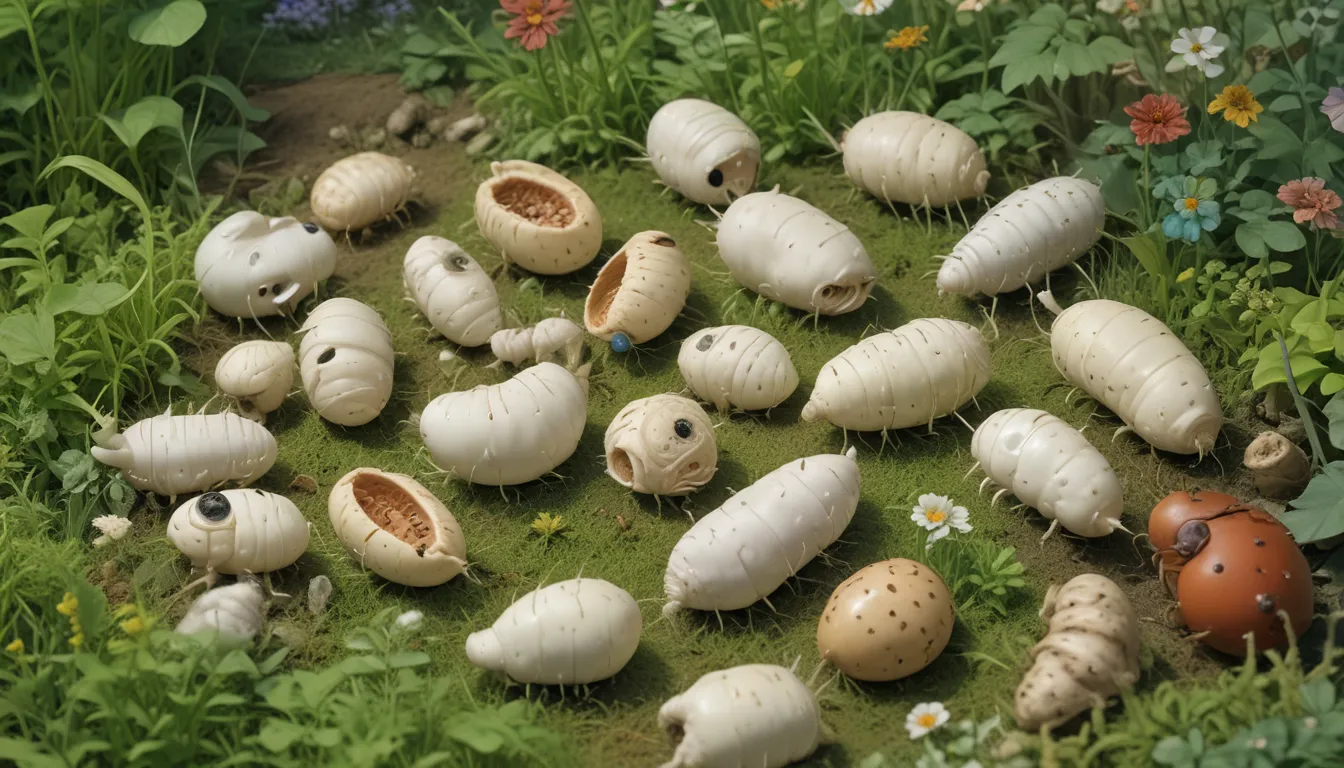Complete Guide to Identifying and Controlling White Grubs in Your Lawn and Garden

Imagine a flock of blackbirds gleefully frolicking on your backyard lawn, only to uncover a patch of sadness infested with fat, grayish-white grubs. These unwelcome guests, known as white grubs, can wreak havoc on your lawn and garden, leaving behind a trail of destruction.
In this comprehensive guide, we will delve into the world of white grubs, exploring their biology, life cycle, identification, and most importantly, effective methods of control to safeguard your cherished green spaces.
What You’ll Learn
Let’s take a look at some key topics we’ll cover in this guide:
- Understanding White Grubs: Their role, impact, and preferred hosts
- Identifying White Grubs: Recognizing these pesky larvae amidst the root-chewing chaos
- Biology and Life Cycle: Unraveling the stages of development and seasonality
- Monitoring: How to detect and assess grub infestations
- Organic Control Methods: Implementing natural strategies to combat white grubs
- Chemical Pesticides: Exploring effective chemical solutions as a last resort
What Are White Grubs?
White grubs, often referred to as grub worms, are larvae of the Scarabaeidae family, encompassing various genera. These root-feeding pests are notorious for causing damage to lawns, turfgrass, and even edible garden plants like potatoes and carrots.
Their feeding habits disrupt the plant’s ability to absorb essential nutrients and water, leading to symptoms such as wilting, chlorosis, and stunted growth. In lawns, these destructive insects manifest as discolored, spongy patches of grass that are unpleasant underfoot.
While small plants may succumb to their attack, larger, well-established plants can withstand their onslaught.
Identification
Identifying white grubs can be a challenge, given the similarity among different beetle species in their larval form. Mature larvae typically measure about an inch long and exhibit common features such as a grayish-white C-shaped body with a brownish head capsule and three pairs of legs.
Detailed inspection can reveal subtle differences in anal slits and raster patterns that distinguish species. Some common species like the European chafer beetle, Japanese beetle, and June bug have distinct characteristics that aid in identification.
Biology and Life Cycle
The life cycle of white grubs follows a consistent pattern across various species, each progressing through four distinct stages: egg, larva, pupa, and adult. The larvae undergo three instars, with adults laying eggs in soil during specific seasons based on the species.
Overwintering in the soil, grubs emerge in spring to resume feeding on roots until maturity. The timing and extent of damage vary depending on species and developmental stages, with mature grubs causing more severe damage.
Monitoring
Vigilant monitoring is crucial in integrated pest management to detect white grubs before their damage becomes irreversible. Keep an eye out for signs like spongy soil, wilting plants, and predation by animals like moles, skunks, and birds.
Digging and inspecting the soil for larvae, along with counting infestation levels, provide valuable insights for initiating control measures promptly.
Organic Control Methods
Combatting white grubs requires a multifaceted approach that integrates cultural practices, biological controls, and minimal use of chemicals. Fostering healthy lawns through proper care, incorporating beneficial nematodes, and employing organic pesticides like neem oil or garlic barrier are effective strategies.
Cultural and physical controls such as maintaining proper lawn height, aeration, and selecting resistant grass varieties play a pivotal role in preventing grub infestations.
Underground Troublemakers
White grubs may appear harmless at first glance, but their insidious nature can wreak havoc on your precious lawn and garden. By adopting a proactive approach that combines natural solutions with targeted pesticides when necessary, you can effectively protect your green spaces from these root-chewing pests.
Have you encountered white grub infestations in your garden? Share your experiences and strategies for tackling this issue in the comments below.
For more insights on managing garden pests, consider exploring our guides on controlling raspberry fruit worms, flea beetles, and root weevils to enhance your gardening expertise.
Remember, a well-informed gardener armed with knowledge is the key to combating white grubs and ensuring the health and vitality of your outdoor spaces.
(1) # Garden Pest Management
(2) # Dealing With Root-Chewing Insects
(3) # In-depth Guide to White Grubs





